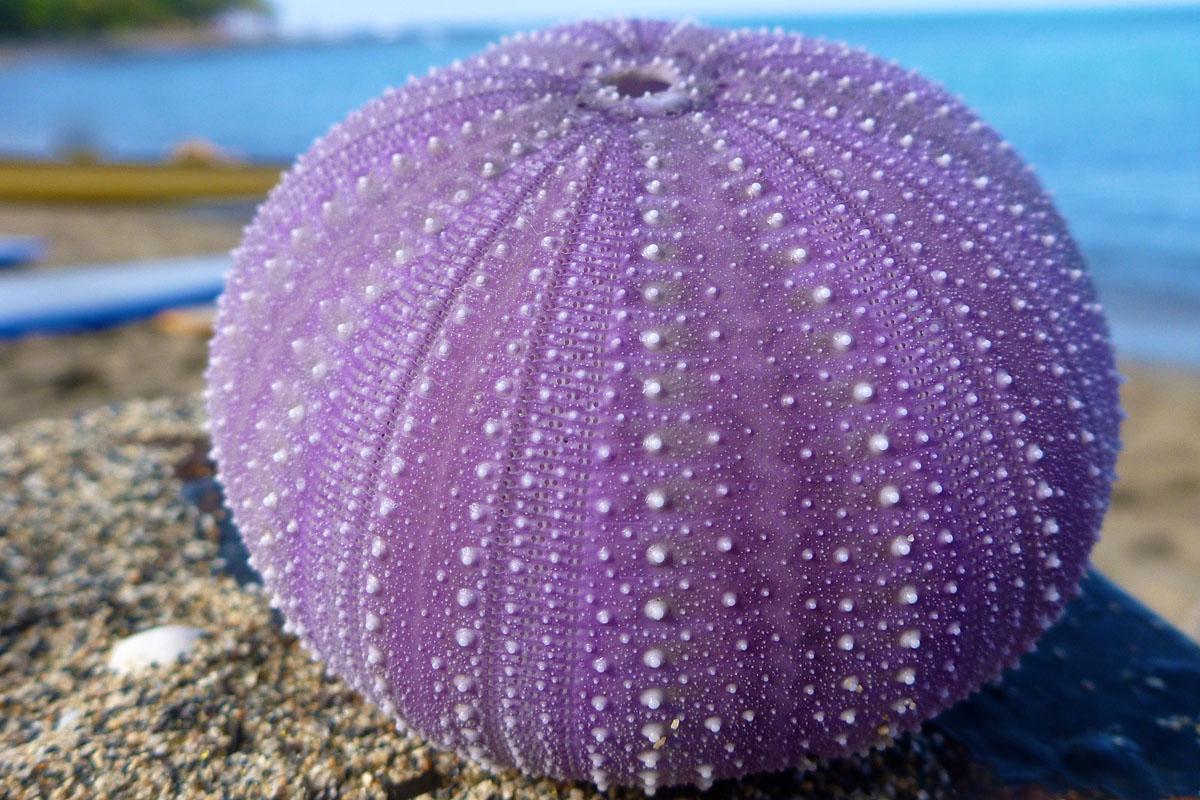Y: Finding any interesting sea life, Don? I saw a couple of starfish in that tidepool over there.
D: I’m looking at something that looks like a furry pink ball right now, Yaël.
Y: Let me see. Oh, that’s a pink sea urchin!
D: Can I touch it? It won’t bite, will it?
Y: It probably won’t bite you, but it does have really sharp teeth that researchers learned sharpen themselves.
D: This thing has teeth? I was just joking about it biting me.
Y: It has five teeth, each in its own jaw, arranged in a circle at the center of their bodies—see it right there?
D: So how do the teeth sharpen themselves?
Y: The convex parts of the teeth are made up of inclined calcite plates that chip away as they wear in a way that keeps them sharp—similar to how you’d sharpen a knife by selectively removing small bits of material from the edge. The teeth keep on growing throughout the sea urchin’s life to make up for the material that chips off. Researchers used an electron microscope to capture 3D movies that showed them how the tiny teeth move and chip in their unique way.
D: Not that the dental life of sea urchins isn’t fascinating on its own terms, but is there any other reason researchers are studying it?
Y: There is. The team that conducted this study is mainly interested in how natural and synthetic nanomaterials function. That can help us design tools for applications like cutting, drilling, and boring, for example.
D: Never boring. Who knew how useful studying sea urchin teeth could be?










